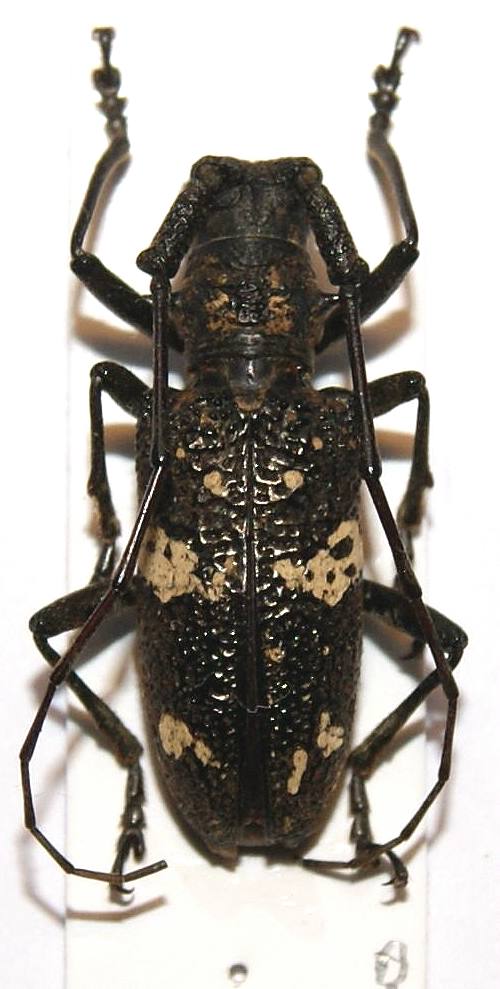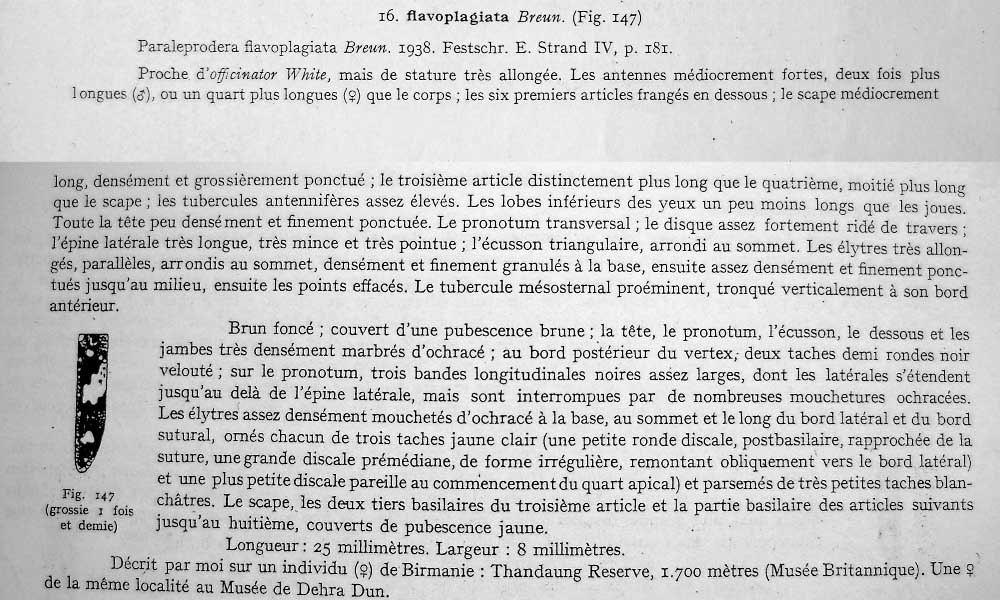| T O P I C R E V I E W |
| Andre |
Posted - 08/01/2015 : 14:02:46

116.23 KB
Myanmar, Kechin Prov., Female, 21 mm. |
| 9 L A T E S T R E P L I E S (Newest First) |
| Xavier |
Posted - 30/07/2018 : 17:12:35
HT picture of Paraleprodera bigemmata (Thomson, 1865) is available here. |
| Andre |
Posted - 11/01/2015 : 13:37:12
Thank you all.....very helpfull ! |
| nasa |
Posted - 09/01/2015 : 17:28:16
Yes, it is difficult to determine.
Do you have the holotype pictures of Paraleprodera bigemmata (Thomson, 1865)(=Paraleprodera assamensis Breuning, 1935), Paraleprodera corrugata Breuning, 1935(=Paraleprodera corrugatoides Breuning, 1948); Paraleprodera flavoplagiata Breuning, 1938;Paraleprodera javanica Breuning, 1943; Paraleprodera malaccensis Breuning, 1936; Paraleprodera tonkinensis Breuning, 1954?
Thanks! |
| dryobius |
Posted - 09/01/2015 : 15:43:42
Well, I believe there is a good chance that you are correct. Species in this tribe which have irregular patterns of maculae on the elytra are frequently impossible to identify until you have a series!! |
| nasa |
Posted - 09/01/2015 : 08:24:38
you all also believe it is Paraleprodera flavoplagiata Breuning, 1938? |
| nasa |
Posted - 08/01/2015 : 17:08:18
it should be Paraleprodera flavoplagiata Breuning, 1938. here is the original description ever attached by Francesco

177.12 KB |
| Xavier |
Posted - 08/01/2015 : 16:46:10
Yes, dryobus, you're right and I follow you. |
| dryobius |
Posted - 08/01/2015 : 16:11:05
I think it is more closely related to Paraleprodera. There are a number of species in that genus which could occur in Myanmar (i.e. officinator, flavoplagiata). I don't have much material from that area.
Pharsalia does not have a large pronotal spine, males have very long thin antennae, the elytral apices are usually truncate and/or broadly rounded, and the elytra are relatively smoothe.
I have an unpublished key to Oriental Monochamini / Lamiini (excluding Acalolepta) (in English) prepared by Hudepohl in 1998. I hesitate to share it with anybody because it is now out-of-date and we never checked it fully. It was a translation of Breuning's key which was updated (to 1998) by Hudepohl. Publishing this key in 1998 would have been a waste of time as we realized that too many genera had to be revised, and we were discovering so many new species in just Borneo. And also, just translating Breuning's key was just perpetuating his errors. |
| Xavier |
Posted - 08/01/2015 : 14:52:07
I think to a Pharsalia sp. |


